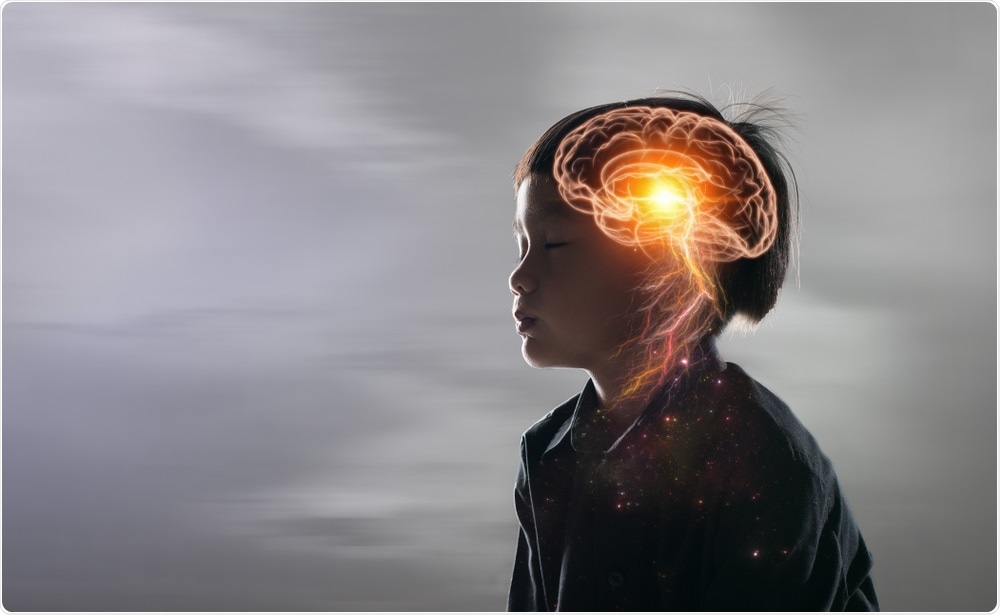The severe acute respiratory syndrome coronavirus 2 (SARS-CoV-2) is the virus responsible for the coronavirus disease 2019 (COVID-19). Several individuals have reported experiencing post-acute sequelae of COVID-19 (PASC), which is defined as acute COVID-19 experience symptoms persisting even after three months post-infection.
 Study: Persistence of neuropsychiatric symptoms associated with SARS-CoV-2 positivity among a cohort of children and adolescents. Image Credit: sutadimages / Shutterstock.com
Study: Persistence of neuropsychiatric symptoms associated with SARS-CoV-2 positivity among a cohort of children and adolescents. Image Credit: sutadimages / Shutterstock.com
Neurological and psychiatric symptoms or neuropsychiatric symptoms are commonly observed in PASC and are common among adults. However, PASC is not well characterized among children and adolescents.
A new study published on the preprint server medRxiv* investigates the persistence of neuropsychiatric symptoms in children and adolescents between three and five months after they tested positive for SARS-CoV-2.
Neuropsychiatric symptoms of PASC
Previous studies have observed an increase in the neurological symptoms in long COVID. In the United States, two studies indicated an increase in anxiety and memory disturbances. Furthermore, one study observed that neuropsychiatric symptoms increased in SARS-CoV-2 infected adults who were not hospitalized.
Despite these observations, such data on the prevalence of neuropsychiatric symptoms of long COVID is not available for children. Thus, the current study attempts to provide more insight into the frequency of PASC among children.
Study design
In the current retrospective study, children and adolescents between the ages of five and 18 who had previously tested positive for SARS-CoV-2 by a reverse-transcriptase polymerase chain reaction (RT-PCR) test were included. This data was collected from six Eastern Massachusetts hospitals and their outpatient affiliate networks between March 12, 2020, and April 18, 2021.
These individuals had at least 90 days of follow-up, which was documented in electronic health records. Through these health records, clinical notes, ICD10 diagnostic codes, medications, and sociodemographic features of the patients were acquired.
The authors of this study previously reported an approach to identify neuropsychiatric symptoms using a derived set of ICD-10 codes and a simple and transparent natural language processing (NLP) approach. They analyzed the sociodemographic features associated with the presence of at least one new-onset neuropsychiatric symptom between 90 and 150 days after an initial positive test for COVID-19. This interval of 90-150 days was further divided as the early post-acute period between 30 and 90 days following a positive RT-PCR result, and the late post-acute period between 90 and 150 days following the positive RT-PCR result.
Study results
Overall, 50% of the subjects in the current study were female. Additionally, 2.9% were Asian, 6.3% Black, 63% White, and 30% Hispanic; with a mean age was 12.4. Of the study participants, 27% had public insurance and 95% had an identified primary care physician or pediatrician within the hospital system.
The current study included 5,058 children between the ages of 5-18, of whom 366 (7.2%) experienced at least one neuropsychiatric symptom between 90 and 150 days following the first positive SARS-CoV-2 test.
The most common symptoms at 90-150 days that were not present prior to infection were headache (2.4%), mood and anxiety symptoms (2.4%), cognitive symptoms (2.3%), and fatigue (1.1%). The prevalence of symptoms was similar in the 60 day period prior to the SARS-CoV-2 PCR test. Of all the individuals, 9.6% had at least one symptom including headache (3.1%), mood and anxiety symptoms (5.3%), cognitive symptoms (2.5%), and fatigue (1.6%).
In the analysis, the individuals who exhibited subsequent symptoms were older children, girls, Hispanic individuals, individuals with public insurance, and individuals with a greater overall burden of medical comorbidity.
Limitations of the study
The potential risk factors for the persistence of neuropsychiatric symptoms were derived from the medications prescribed. Some of these factors may actually represent markers of pre-existing neuropsychiatric symptoms.
The electronic health records reflect clinical service, not systematic assessment. The individuals with closer follow-up for non-COVID-19-related reasons may be more likely to have neuropsychiatric symptoms documented.
Conclusion
The prevalence of neuropsychiatric symptoms between 3 and 5 months following the first SARS-CoV-2 positive test was similar to that observed in the period prior to infection. However, further studies are needed to substantiate these results further.
Identifying precise estimates of prevalence will be important to facilitate conversations about the risks and benefits of vaccination, as well as assist with in-person education.
True estimates of the risk of infection should consider the acute impact of the disease and the PASC risk. Even if an outcome is rare, it can significantly impact the patient’s quality of life when it occurs early in life.
The low rates of neuropsychiatric PASC in children and adolescents observed in this study are reassuring. However, further studies are needed to better understand neuropsychiatric PASC in children and adolescents.
*Important notice
medRxiv publishes preliminary scientific reports that are not peer-reviewed and, therefore, should not be regarded as conclusive, guide clinical practice/health-related behavior, or treated as established information.
- Castro, V.M., Gunning, F.M., & Perlis R,H. (2021). Persistence of neuropsychiatric symptoms associated with SARS-CoV-2 positivity among a cohort of children and adolescents. medRxiv. doi:10.1101/2021.09.28.21264259. https://www.medrxiv.org/content/10.1101/2021.09.28.21264259v1
Posted in: Child Health News | Medical Research News | Medical Condition News | Disease/Infection News
Tags: Adolescents, Anxiety, Children, Coronavirus, Coronavirus Disease COVID-19, Diagnostic, Education, Fatigue, Frequency, Headache, Hospital, Language, Polymerase, Polymerase Chain Reaction, Primary Care, Respiratory, SARS, SARS-CoV-2, Severe Acute Respiratory, Severe Acute Respiratory Syndrome, Syndrome, Virus

Written by
Dr. Shital Sarah Ahaley
Dr. Shital Sarah Ahaley is a medical writer. She completed her Bachelor's and Master's degree in Microbiology at the University of Pune. She then completed her Ph.D. at the Indian Institute of Science, Bengaluru where she studied muscle development and muscle diseases. After her Ph.D., she worked at the Indian Institute of Science, Education, and Research, Pune as a post-doctoral fellow. She then acquired and executed an independent grant from the DBT-Wellcome Trust India Alliance as an Early Career Fellow. Her work focused on RNA binding proteins and Hedgehog signaling.
Source: Read Full Article